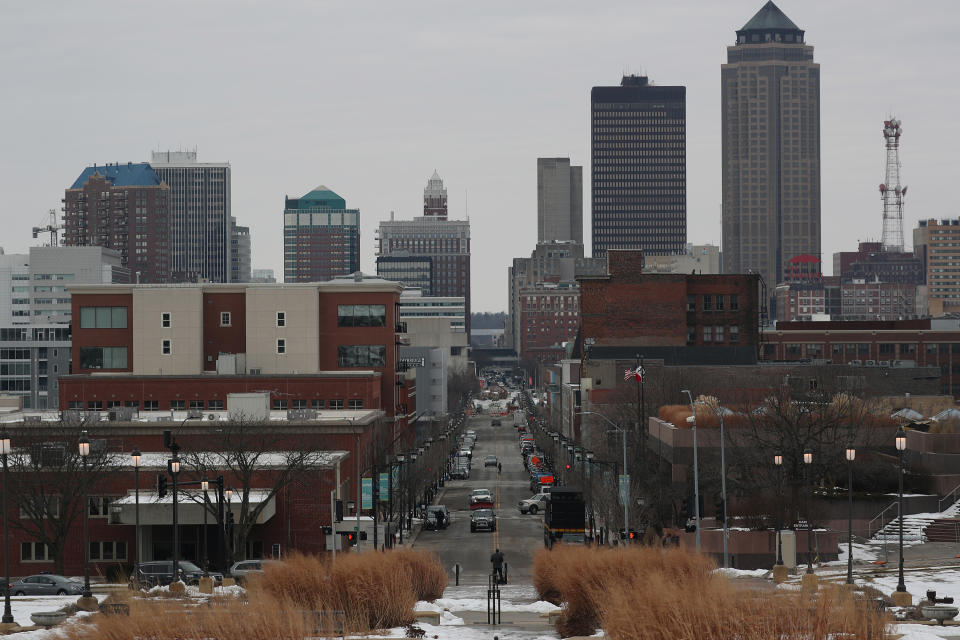These U.S. cities are best positioned to bounce back from the coronavirus pandemic, according to Moody's
Moody’s Analytics analyzed U.S. metro areas capabilities for a strong recovery post-coronavirus using two primary factors: population density and educational attainment.
“The most dynamic recoveries may well bypass traditional powerhouses and take place instead in areas that [weren’t] poised to lead the way in 2020 before everything changed,” wrote Adam Kamins, senior regional economist at Moody’s Analytics.
The report examined the top 100 metro areas in the U.S. The metros poised to recover quickly based on the analysis included San Jose, California; Durham, North Carolina; Austin, Texas; Seattle; and Minneapolis.
These cities appear above the best-fit line in the regression analysis below, and lean towards the top left.

Recovery will depend on population density
Kamins believed that the twin factors of low population density and educational attainment were going to boost these metro areas.
“A key difference between this recovery and the last recovery is the population density,” he explained. “It's going to have a different effect this time than it did last time.”
During the Global Financial Crisis, “the first place is out of the recession were big densely populated global cities,” he explained. But this time, depending on the duration and the eventual outcome of the COVID-19 outbreak, Kamins believed that “big densely populated cities … are going to be viewed as inherently risky.”
So “some of the places that we're really looking at now would be places that have high degrees of educational attainment but are lower density … [that] have grown very, very well over the last five or six years in particular, are pretty well positioned coming out of this whenever we do,” he said.

Cities best positioned for a recovery
Economies built around a major university, such as Durham, North Carolina, and Madison, Wisconsin, “could enjoy a surge in growth in the years to come,” Kamins wrote in his report.
At the same time, with the coronavirus pandemic putting pressure on colleges’ finances and with enrollment dropping, could that reliable ingredient to the recovery recipe be in peril?
“You could see possibly where we get in a situation four or five years down the road where the pool of available first year workers that have recently graduated colleges is less than usual,” Kamins said. But “there's just hope at that point you're in a recovery or expansion anyway, and it just creates more labor market tightness, especially at the entry level.”
Denver, Salt Lake City, and Washington D.C. were also noted as positioned for a relatively quick recovery. D.C. in particular was an interesting case, Kamins explained: “That’s one where I think that was more a function of just as population density being a lot lower than other kind of Northeastern cities.”
Two cities that surprised him were Des Moines, Iowa, and Omaha, Nebraska.
“They're not places that you think of as sort of prestigious economies — they’re somewhat isolated in terms of where they are relative to the rest of the U.S.,” Kamins said. “But both of those actually have a pretty strong financial services sector, a fairly well educated population, especially compared to the kind of surrounding regions at lots of opportunity to kind of spread out.”
And especially if the trade war with China “recedes from memory under a new administration,” the farm sectors in those cities could be poised to benefit well.

Most vulnerable cities
On the flip side, cities facing headwinds on the road to recovery are the names we are most familiar with, Kamins wrote.
For instance, “New York City’s greatest asset is a large, skilled workforce that is drawn to the fast-paced and highly interactive nature of life in the Big Apple,” he explained. “But activities such as riding the subway, dining in crowded restaurants, and attending Broadway shows may be viewed as inherently risky for some time, consistent with the city's status as the single-most economically exposed metro area or division.”

Boston, Miami, Las Vegas, and San Francisco could also see some tough challenges ahead. These cities generally appear below the line and lean towards the bottom right in the map above.
“Places like San Francisco, Miami, are very high on the list,” Kamins said, adding that tourist hotspots like Las Vegas were also in this group because its economy “is almost completely shuttered right now and will be for some time as both leisure travel and business travel dry out.”
And while big cities are likely to be able to eventually recover, out-migration may pick up, Kamins added, “the generation that is growing up today could remember the impact of the COVID-19 pandemic … [and eventually] opt for less densely packed pastures in the decades to come.”
Would this sort of financial pressure lead some states or cities to opt for a bankruptcy route? Kamins said that it was too soon to tell, but there were signs to watch.
“What we would be looking for would be states where the impact is going to be very severe,” he explained.
For instance, “a state like Illinois … has above average exposure, because Chicago [has] … densely populated urban characteristics,” Kamins said. “And the fiscal situation for that state [will be] extremely problematic.”
—
Aarthi is a writer for Yahoo Finance covering consumer finance and higher education. She can be reached at aarthi@yahoofinance.com. Follow her on Twitter @aarthiswami.
Read more:
What colleges need to consider before re-opening in the fall, according to experts
Democrats to private student loan lenders: '‘Cancel or discharge as many delinquent loans as possible’
Coronavirus student loan relief: Education Department says borrowers can ask for a payment pause
Read the latest financial and business news from Yahoo Finance
Follow Yahoo Finance on Twitter, Facebook, Instagram, Flipboard, SmartNews, LinkedIn, YouTube, and reddit.

 money
money 
